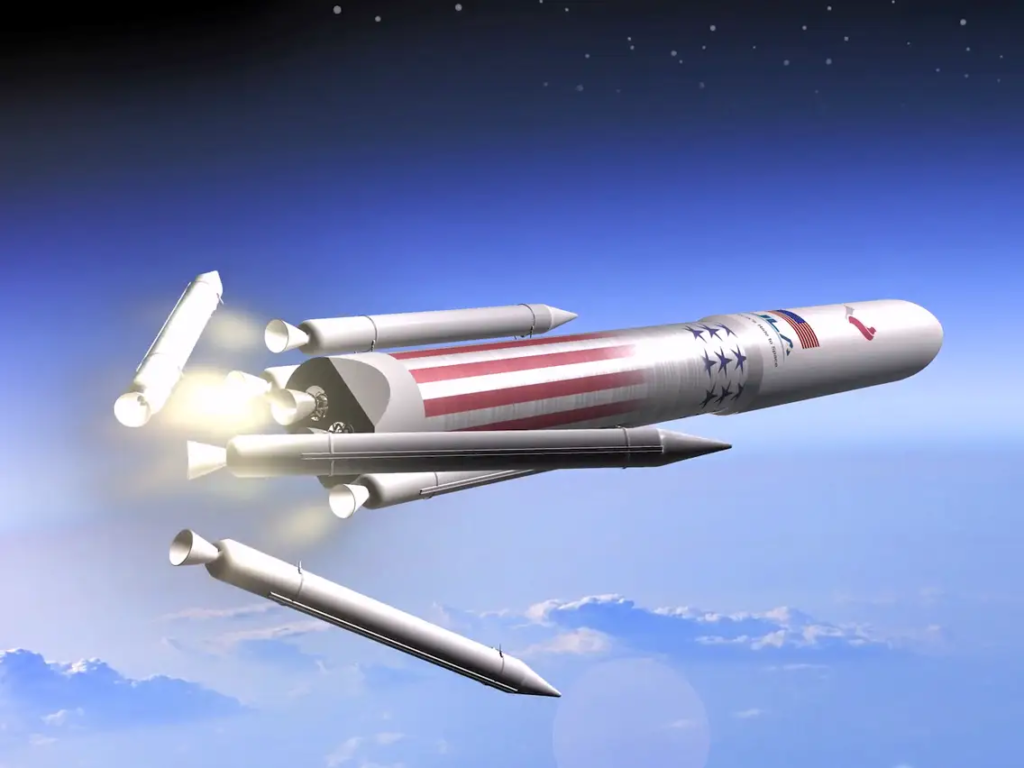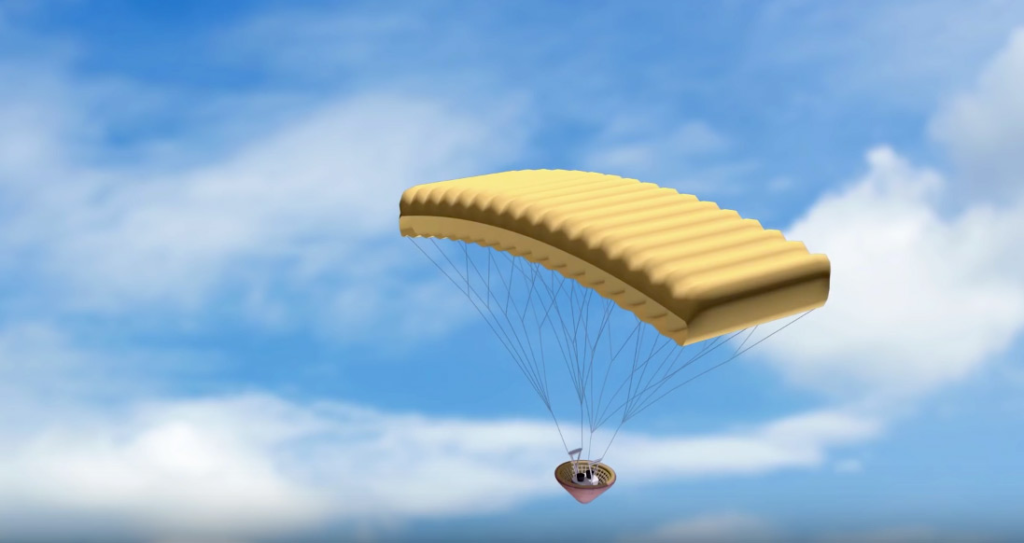
ULA’s Plan To Make Vulcan Reusable
Looking at the majority of companies within the space industry today, you can see a common theme in next generation launch vehicles. This theme is the shift toward either partial or full reusability. While there are a lot of differences in this regard on what is reused and how between each rocket, no matter the size of the launch vehicle, it’s becoming a very popular design choice. This has to do with the fact that reusability, especially in large launch vehicles, provides significant cost and time improvements.
Despite these benefits and the heavy shift within the industry, United Launch Alliance’s next generation launch vehicle Vulcan is fully expendable. At least, on the surface this rocket is fully expendable, however, in reality, the company has some unique reusability plans for the future. Recent updates from the company and CEO Tory Bruno have shined more light on the future plans and what we can expect.
No matter how reliable Vulcan is, as time goes on, ULA knows that other rockets will begin to gain a significant advantage on the company if they successfully demonstrate reusability. It’s important to consider that a company can offer lower launch costs to customers when reusability is saving them money each mission. Here I will go more in-depth into the recent updates from ULA on Vulcan reuse, SMART technology, busy launch cadence, and more.
Vulcan Reuse

Just days ago, ULA revealed that Vulcan’s first orbital flight test is scheduled to happen no earlier than May 4th. This launch will test a bunch of new technology including the two BE-4 flight engines. All this being said, the rocket is fully expendable and plans to be for at least a few years.
The first important update on this topic came in a tweet yesterday from Bruno when he replied saying, “Stated the trades there. Switched to Engines first because of their value, and because the cost of the Vulcan fairing is much lower than Atlas. But once we are successful with engines, we’ll be looking for other opportunities.” Here he is clarifying that Vulcan reusability will first be implemented for the two BE-4 engines, and then the fairing after. With this in mind, the question becomes how long from now before we see the two BE-4 engines reused. Recently, in a quote, Tory Bruno stated, “In terms of our engine recovery, that is going to happen within a handful of years. I don’t want to say exactly when because it’s part of the contract we have with one of our customers at this time, and we’re not releasing the details of that. But it will take a couple of years to actually be reusing the engine.”
Based on all this information, we can expect Vulcan to be fully expendable likely up until around 2025 or 2026. At that point, we could start to see the reuse of the BE-4 engines and the fairings as well. Unfortunately, by then, Vulcan will have already launched a lot based on ULA’s estimates, meaning a significant amount of hardware would have been expended. “We have to ramp up,” Bruno said. “Before the end of 2025 we expect to be really at a tempo, which is flying a couple of times a month, every two weeks.” Two flights a month using two BE-4 engines each time comes to around 50 BE-4 engines in a single year. With such a high expected launch cadence, it’s clear why ULA is hoping to shift Vulcan into a partially reusable launch vehicle. Not only will this save a lot of money, but it would also help Blue Origin on the production side.
Right now Blue Origin is trying to increase production of BE-4 as its demand is expected to soar in the coming years. Needing to supply both 50 BE-4s for Vulcan in one year plus 7 for each New Glenn is a massive jump from current production rates. If Vulcan could reuse its engines, it would completely change the requirements for Blue Origin and open up a lot more opportunities for ULA. At the end of the day, ULA knows the benefits of even just partial reusability for Vulcan. They also know that reusability is by no means easy and takes a lot of time and money to develop. However, their approach with Vulcan could end up costing a lot more depending on future launch cadence and time before they implement these strategies.
Vulcan’s Reuse Design

Now that we know more about ULA’s decision and some of the important factors they have to consider, we can take a closer look at how the company plans to reuse Vulcan’s BE-4 engines. A few months ago in November, as a rideshare on an Atlas V launch, NASA tested a demonstrator of an inflatable aeroshell, or heat shield, that could slow down and survive atmospheric re-entry. ULA plans to adapt this technology, developed by NASA for interplanetary missions, as part of its engine recovery plans. “You will see us potentially do more demonstrations,” Bruno said. “We’ll be collecting environmental data to see booster experiences. We’ll recover engines and look at them. And then eventually we’ll have the confidence to recover them, inspect them, and then reuse them. And so that will happen in this window of a few years, but it’s too early at this moment for me to say exactly when. But you’ll see that activity ramp up.”
Specifically, ULA is interested in a reuse method named SMART. ULA CEO Tory Bruno tweeted saying, “At the moment, component reuse (SMART) is the most economically clear return to factory approach. Upper stages that are reused should do so in space” ULA estimated this technology would reduce the cost of the first stage propulsion by 90%, and 65% of the total first-stage cost.
At its core, recovery of hardware from space requires atmospheric reentry, deceleration, and landing. Reentry can be accomplished either by retro-propulsion, or by utilizing the atmosphere to decelerate the object via aerodynamic drag. Atmospheric deceleration at reentry velocities requires an aeroshell featuring a thermal protection system (TPS) to protect the payload. The aeroshell has historically been limited in diameter and area by the launch vehicle shroud. The hypersonic inflatable aerodynamic decelerator (HIAD), with its inflatable structure and flexible TPS, is an emerging technology with significant promise.
This technology is applicable to entry and descent that have an atmosphere, notably Mars and our own home planet Earth. HIAD technology removes the launch vehicle shroud diameter constraint for aeroshells. A HIAD is relatively easy to pack within the launch vehicle, and can generate lift. Years ago an initial feasibility study was performed to investigate utilizing a HIAD to recover the first-stage new Vulcan launch vehicle. It found that there is sufficient mounting and separation hardware.
In terms of a mission profile, after separation, the nose assembly extends to position the HIAD such that it will clear the separation plane when inflated. Entry simulations assuming a ballistic entry predict very high peak decelerations (15g or more). Preliminary results indicate a 10- 12 meter HIAD will be required to recover the booster module. From here, it would continue through Earth’s atmosphere before parachute deployment. This would slow down the two BE-4s and additional technology significantly before a planned soft water landing. Here they would float on an inflatable aeroshell before being recovered by ULA and taken back to land for refurbishment.
One of the most interesting aspects of this technology and idea was a different recovery method that ULA was originally planning. Here, similar to Rocket Lab, ULA was planning to catch the bottom booster segment and two BE-4 engines with a helicopter as they parachuted down to Earth. MAR or Mid Air Recovery was developed and used extensively in the 1960s for recovery of payloads (film canisters) from space for the Corona project. In ULA’s case, they would utilize a ram-air main parachute that decelerates the payload. It would also provide a stable and predictable velocity vector that enables a helicopter equipped with a flying articulated grapple to approach from the rear and capture the in-flight parachute and gently transfer the payload mass from the parachute to the helicopter. The helicopter then transports the payload to a precise location on land or sea (e.g., barge or ship) for final recovery. In all likelihood, ULA changed this plan for something more repeatable and not as risky.
When asked about the economics of this recovery plan, Tory Bruno responded saying, “Breakeven in 2 to 3 flights fast” In addition, in April 2021 CEO Tory Bruno said that the additional launches purchased by Amazon for the Kuiper satellite constellation would require a higher launch cadence and that this provided support for the business case to go forward with the SMART concept. Based on the busy cadence I highlighted prior, reusing these engines would be very beneficial for the company. In the almost 8 years that ULA has been planning to reuse Vulcan’s engines, quite a lot of changes have been made to the recovery process. By 2020, ULA had not announced firm plans to fund, build and test this engine-reuse concept, though in late 2019 they stated they were “still planning to eventually reuse Vulcan’s first-stage engines” By now it’s clear that they plan to use this technology around 2025 or 2026 to help increase Vulcan’s launch cadence and lower costs as well.
Conclusion
United Launch Alliance is planning to make Vulcan a partially reusable rocket. Right now the next generation launch vehicle is expendable, with practically nothing being reused. As other companies within the industry shift toward a more ambitious method, ULA has decided to follow in a could of years. This could end up being a great addition to the company and a first for ULA’s rockets. We will have to wait and see how it progresses and the impact it has on the space industry.
